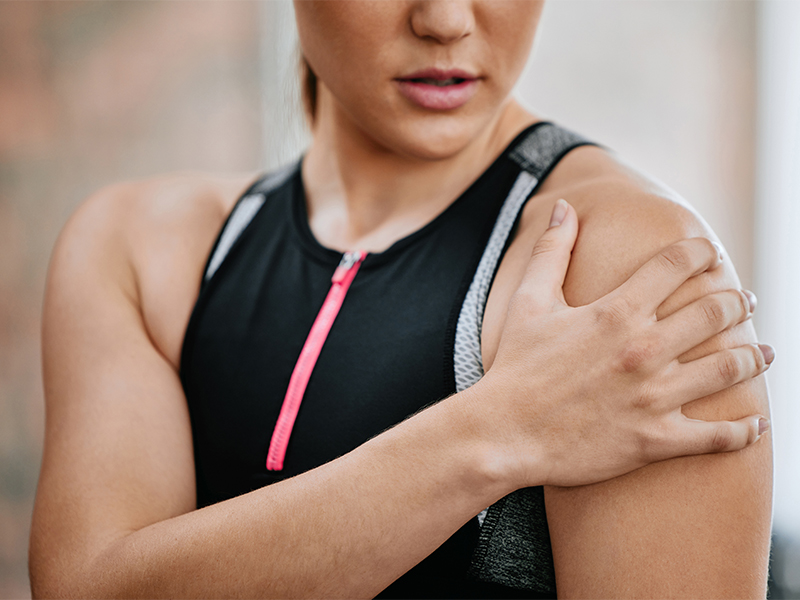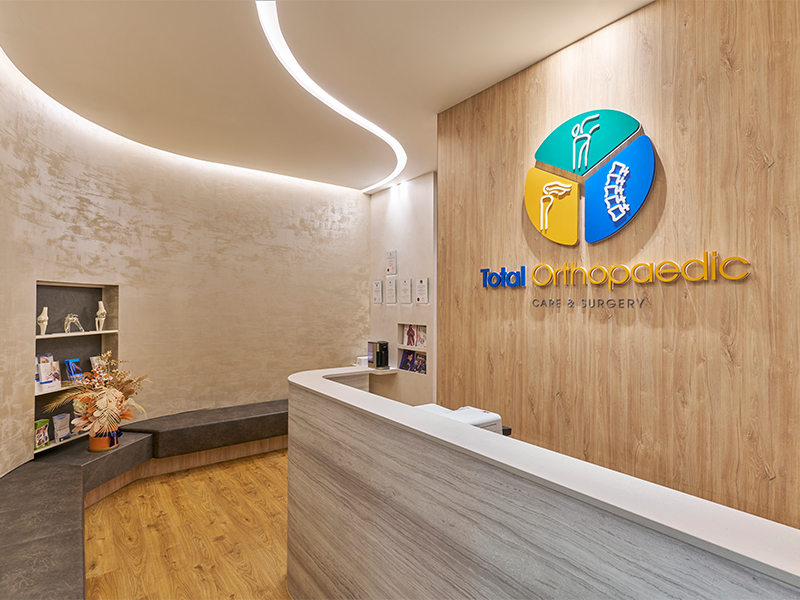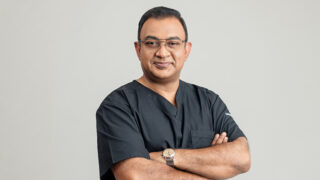Having a dislocated shoulder is surprisingly common – and it’s also painful. How do you know it you have it and what can be done to fix it? Here, an orthopaedic surgeon explains the causes, symptoms and treatment for shoulder dislocation and instability.
How does a normal, healthy shoulder move?
The shoulder joint consists of two bones: the humerus (upper arm) and the scapula (shoulder blade). It’s a highly mobile joint, allowing us to move our arm in all directions including overhead activities. The majority of the movement occurs at the joint socket, where the humeral head and the small shallow groove (glenoid) of the scapula meet.

Stability of the shoulder joint is contributed by the bony anatomy (glenoid and humeral head), labrum (glenoid joint lining) and ligaments, surrounding muscles (rotator cuff) and tendons. These structures work in unison to keep the humeral head centred on the glenoid when the arm is moving.
What causes this to go wrong and lead to shoulder dislocation?
Shoulder instability occurs when the head is not centred on the glenoid during shoulder movement. When the humeral head completely comes out of the socket, a dislocation occurs. In some instances, it partially comes out of the socket before reducing back into the joint, which is known as subluxation.
Causes of shoulder dislocation largely fall into two categories. Firstly, after trauma, where a large force pushes the humeral head out of its socket. This commonly happens when a person falls or collides with another person during sport. Rarely, it could also happen during an electric shock or after an epileptic seizure. A second cause is generalised joint laxity. Some people are born with loose ligaments (such as connective tissue disorders), and for others it occurs over time from overuse (overhead/throwing sports).

Shoulder dislocations can be associated with some structural deficits, including glenoid labrum tear, glenoid fracture and humeral head bone loss. These structural deficits, of varying severities, contribute to future recurrent dislocations.
Explain the different types of shoulder dislocation. What does it feel like?
There are three main directions a shoulder can dislocate: anterior (to the front), inferior (overhead) and posterior (to the back). Anterior and inferior dislocations more commonly occur after a traumatic episode. Posterior dislocations require a larger force and these tend to occur after an electric shock or an epileptic seizure.
When a dislocation occurs for the first time, symptoms include pain, an inability to move the arm as it feels “jammed”, and a loss of contour of the shoulder or a bulge in front. Many people also feel a numbness sensation and/or weakness.
What steps should a person take straight after a dislocated shoulder?
Immediately stop what you’re doing if you suspect you’ve dislocated your shoulder. Keep the arm close to the body and seek immediate medical attention, ideally A&E. Don’t try to reduce the shoulder joint on your own as you may further damage the surrounding structures.

Tell us about the treatment for shoulder dislocation. Are there any potential long-term complications if not properly treated?
Treatment for shoulder dislocation and instability varies based on many factors like age, functional demand, number of previous dislocation episodes, type and extent of structural damage sustained. They include shoulder arthroscopy and repair of the glenoid labrum, bone block transfers and the Laterjet procedure. I discuss each treatment option in detail with my patient during our consultation as I think it’s important for them to be actively involved in the decision-making process of their care.
Shoulder instability and dislocation episodes, especially if they are recurrent, should be treated as they compromise quality of life and functional capability. It can also result in nerve injuries and further structural damage like rotator cuff tears and bone loss from the glenoid.
How effective are surgical interventions for recurrent dislocated shoulder, and what does the recovery process typically involve?
Untreated shoulder dislocations are associated with a high recurrence risk of 80 to 90 percent. This is especially the case in young patients and those involved in contact sports. Surgical intervention reduces re-dislocation rates to as low as five to seven percent, even for those that continue to play sport.
Post-surgical rehabilitation varies depending on the type of surgery performed. Usually in the first six weeks post-surgery, I’ll recommend restrictions in the range of motion of the shoulder. After this, rehabilitation focuses on progressive optimisation of shoulder mobility, before gradual strengthening exercises are given.
Is there any way to prevent shoulder dislocation from happening?
Episodes of shoulder dislocation can be minimised with general care and awareness of your surroundings to avoid a fall. During contact sports, keeping your arm closer to your body during collisions also decreases the possibility of dislocation. In life, however, accidents can’t always be prevented! In patients with a history of epilepsy, minimising seizures with good medical control is essential.
Three words to describe what you love about your job?
Fulfilling, challenging and collaborative. Fulfilling because it’s a blessing to be able to positively impact my patients’ lives by educating them about their condition, offering solutions to their problems (surgical or otherwise) and just getting to know them better. Challenging, because a medical condition may seem routine but treatment is usually not a “one size fits all” approach – each patient is unique in their individual characteristics and requirements, so most tend to benefit from a bespoke approach to their care. And collaborative, because treatment outcomes are best when patients are fully involved in all stages of their care. I truly believe that both doctor and patient should walk this journey together.
About the doctor
Dr Benjamin Seah is a consultant orthopaedic surgeon with over 15 years’ experience. He specialises in complex elbow and shoulder conditions including fractures, ligament injuries, instability, arthroscopy, tendon transfers, joint replacements and reconstructions.
Total Orthopaedic Care & Surgery
#09-24 Novena Medical Centre, Square 2, 10 Sinaran Drive
6371 0640 | enquiry@totalorthopaedic.com.sg totalorthopaedic.com.sg
This article on treatment for shoulder dislocation first appeared in the September 2024 edition of Expat Living. You can purchase the latest issue or subscribe so you never miss a copy!
To make the most of living in Singapore, read our latest City Guide here for free!
Don't miss out on the latest events, news and
competitions by signing up to our newsletter!
By signing up, you'll receive our weekly newsletter and offers which you can update or unsubscribe to anytime.



